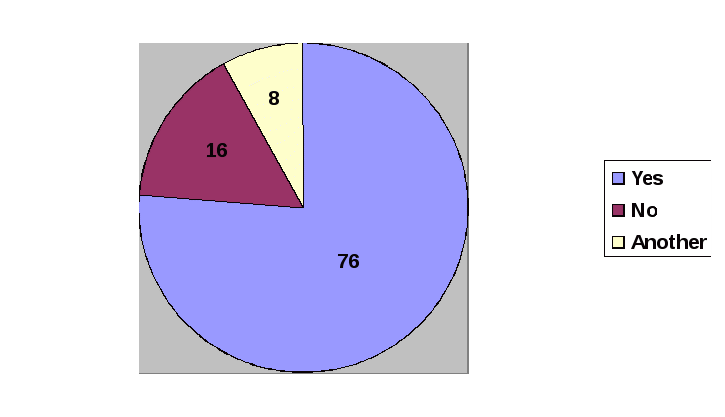- Преподавателю
- Иностранные языки
- Исследовательская работа на тему: Шоколад: за и против
Исследовательская работа на тему: Шоколад: за и против
| Раздел | Иностранные языки |
| Класс | - |
| Тип | Другие методич. материалы |
| Автор | Сунгатуллина Г.Р. |
| Дата | 02.09.2015 |
| Формат | doc |
| Изображения | Есть |
Научно-исследовательская работа в номинации « Здоровое питание»
на тему:
«Chocolate: the pros and the cons. Шоколад: за и против»
Выполнила: Бикбаева Алия Равилевна
Ученица 10 класса
МБОУ «Шеморданский лицей» Сабинского муниципального района РТ
Руководитель: Сунгатуллина Гульнур Равилевна
учитель английского языка I квалификационной категории
Contents:
Introduction………………………………………………………3
-
The main part………………………………………………... 3
1 History of chocolate……………………………………………...3
2 Types of chocolate……………………………………………….4
3 Is chocolate good for you?.............................................................6
4 The pros…………………………………………………………. 6
5 The cons…………………………………………………………..8
II The practical part …………………………………………….10
My research…………………………………………………….. 10
Conclusion………………………………………………………….12
Bibliography………………………………………………………..12
Introduction
Everyone loves chocolate-children and adults alike. And no matter what your age, you'll enjoy learning about your favorite flavor. Chocolate is a key ingredient in many foods: candy bars, milk shakes, cookies, flavored coffee.
In fact, it ranks as the favorite flavor of most people. And yet, few of us know the unique origins of this popular treat.
Main aim of our project:
-
To help students developing horizons about chocolate
Optimal tasks are:
-
Retell about a history of chocolate
-
Chocolate effects
-
To know favorite brands of teenager's chocolate
It's amazing how much effect this favorite dessert can have on us. Due to the delight of the use and contained in chocolate phenyl nine produced number hormones of happiness: serotonin, dopamine and endorphins, which have a positive impact on our health.
Everybody knows that there are different types of chocolate: unsweetened, dark, white, milk, semi-sweet and bittersweet. You can choose any to your taste.
Everybody knows that it is sweet. It is delicious. People all over the world are fond of it. But what do we really know about chocolate?
I. The main part
History of chocolate
Chocolate dates back to the time of the Aztecs when cocoa beans were so prized that they were used as currency during the reign of Montezum. The ancient Mayans and Aztecs of the Americas consumed chocolate. These people drank cacao, or the chocolate bean, which was ground into hot water, like the hot chocolate we drink today. However, their cacao was rather bitter and had chilies in it. How did chocolate spread around the world? In 1502, on his fourth and last voyage to the New World, Christopher Columbus came upon a canoe that was transporting agricultural products, including cacao beans. He seized the contents of the canoe and brought cacao back to Spain. Chocolate did not become popular for many years in Europe, but decades later, the Spaniards added sugar to the cacao, and the rest, as they say, is history. Chocolate soon became the preferred drink of the royal courts in Europe. The belief was that chocolate could cure any illness. The Aztecs consumed chocolate in the form of a sweetened drink, which was believed to increase wisdom, boost energy levels and have a powerful aphrodisiac action. Modern forms of chocolate combine cocoa paste with cocoa butter, sugar and cream or milk, with a variety of additional flavourings such as vanilla, nuts and liqueurs that may improve the flavour, but may reduce its health value. We take a look at some of the pros and cons of eating chocolate this Easter...
Types of Chocolate.
The main types of chocolate are white chocolate, milk chocolate, semisweet chocolate and bittersweet chocolate and unsweetened chocolate. These types of chocolate may be produced with ordinary cacao beans (mass-produced and cheap) or specialty cacao beans (aromatic and expensive) or a mixture of these two types. The composition of the mixture, origin of cacao beans, and the treatment and roasting of beans, and the types and amounts of additives used will significantly affect the flavor and the price of the final chocolate.
White chocolate
Chocolate made with cocoa butter, sugar, milk, emulsifier, vanilla and sometimes other flavorings. It does not contain any non-fat ingredients from the cacao bean and has therefore an off-white color.
Milk chocolate
Sweet chocolate which normally contains 10-20% cocoa solids (which includes cocoa and cocoa butter) and more than 12% milk solids. It is seldom used for baking, except for cookies.
Dark chocolate
Sweetened chocolate with high content of cocoa solids and no or very little milk, it may contain up to 12% milk solids. Dark chocolate can either be sweet, semi-sweet, bittersweet or unsweetened. If a recipe specifies 'dark chocolate' you should first try semi-sweet dark chocolate.
Sweet dark chocolate
Similar to semi-sweet chocolate, it is not always possible to distinguish between the flavor of sweet and semi-sweet chocolate. If a recipe asks for sweet dark chocolate you may also use semi-sweet chocolate. Contains often 35-45% cocoa solids.
Semi-sweet chocolate
This is the classic dark baking chocolate which can be purchased in most grocery stores. It is frequently used for cakes, cookies and brownies. Can be used instead of sweet dark chocolate. It has a good, sweet flavor. Contains often 40-62% cocoa solids.
Vitamins
Vitamin
Properties
Other sources, besides chocolate
Dark chocolate
Milk chocolate
Recommended daily rate
Vitamin D
Necessary for calcium metabolism, reproductive function and immune system.
Oil, egg yolk, liver, fatty fish, cod liver. A significant number are synthesized by the body under the action of sunlight on the skin.
0,05 mg
0,06 mg
5mkg
Vitamin E
Playing an important role of the antioxidant, protecting the phospholipids. Cell membranes in the body.
Nuts, cereals, egg yolk, green vegetables, certain vegetable oils.
1mg
1,1 mg
10mg
Biotin
Coenzyme plays an important role in the metabolism of lipids, glyutsidov and certain amino acids, as well as the activities of the central nervous system.
Cauliflower, eggs, nuts, dairy products, liver, lentils, brewer's yeast.
20mkg
0
150mkg
![]()

Is chocolate good for you? The pros and the cons.
The pros
If the taste of chocolate appreciated by the ancient Indian tribes, the modern scientists have carried out serious research and proved the undoubted benefits of chocolate for human health.
Contained in chocolate magnesium counteracts depression, improves memory, increases resistance to stress and strengthens the immune system Say Japanese scientists. They advise patients to use it to prevent colds and seasonal fatigue. As a result of years of research working group of the University of Tokyo found: those who daily eats 25-50 g chocolate, practically does not suffer from cancer and peptic ulcer disease.
Chocolate saves from a heart attack and stroke Convinced the American cardiologists. The results of their large-scale study suggest: regular intake of chocolate normalizes the function of platelets blood plates. Which it contains biologically active substances from the group of flavonoids did not give them stick together and prevent the formation of clots in blood vessels of the heart and brain. In this sense, like chocolate aspirin, but differs from it a pleasant taste and lack of side effects.
Chocolate protects vessels from atherosclerosis. This is evidenced by research staff of the Institute of Nutrition of RAMS. Essential oils that make up the sweets, hinder the deposition of cholesterol on artery walls. The same conclusion was reached by members of the American Chemical Society: they watched the 1854 participants in the experiment, which for 15 years ate 34 pieces of chocolate a day. Among the subjects was 5 times less people prone to cardiovascular and cancer, than in the control group, whose members have ruled out a treat from the diet. 40 g dark chocolate brings the same health benefits as a glass of red wine,
according to French doctors.
Chocolate strengthens blood vessels, Makes smoother the beating heart and normalizes blood pressure, rather than enhances, as previously thought. In the 200-gram tile contains only 30 mg of caffeine, while with each cup of coffee or strong tea, you get 6 times more of this substance. The British, who not without reason, consider apples universal prophylactic against all diseases, recently equated to them, and chocolate. His dark varieties are richer in vitamins A and B, potassium, calcium, phosphorus and iron than apples, yogurt and cheese.
«Bitter Chocolate eliminates excess weight "- Said Swedish Professor Sven Larsen. He puts obese patients at a chocolate diet. However, according to the scientist, as a fat burner is suitable not just chocolate, but only bitter dark and without any fillings. It contains, first, much less fat than the lighter varieties, and secondly, the optimal dose of caffeine that suppresses appetite and activates the metabolism and eliminates subcutaneous deposits, and thirdly, a large number of phenols: they bind free radicals, which are formed when excess weight loss and cause general intoxication - a kind of self-poisoning organism.
Chocolate does not cause acne, According to American dermatologists. Within 3 weeks of being fed a group of scientists teenagers sweetness, but the condition of their skin remained the same as that of teenagers, who all this time not touched chocolate. Experts concluded: acne occur because of hormonal changes characteristic of the transition to adulthood, and chocolate has nothing to do with it.
How chocolate influences on the brain
-
You've heard the claims: Chocolate evokes that loving feeling.
-
Chocolate contains approximately 50% fat and close to 50% carbohydrate; this combination of nutrients results in a powerful effect whereby all brain chemicals (specifically serotonin, dopamine, and opiate peptides) are positioned at optimal levels for positive mood and euphoric feelings.
-
Palatable foods such as chocolate, cakes, and ice cream stimulate the release of brain opiates known as endorphins, which make you feel good and may even increase appetite.
-
As endorphins are chemically similar to morphine, the brain responds to them in the same way as it responds to morphine.
-
Bitter dark chocolate can be favorably affect the human body. Milk chocolate is more popular but less healthy.
The Cons
Expense
Eating chocolate every day will undoubtedly increase your shopping bill. The BMJ researchers estimated it would cost £3 per week, but that spending more for a premium brand of dark chocolate might be rewarded by improved quality of life.
Calories
Sadly, chocolate packs a lot of calories. Just 100g contains: Milk chocolate 520 kcals, dark chocolate 510 kcals and white chocolate 529 kcals. It does provide useful amounts of micronutrients, however. For example, 100g dark chocolate contains: 33mg calcium (compared with 220mg for milk chocolate), 89mg magnesium, 2.3mg iron, 0.7mg copper, 4mcg selenium and 1.4mg vitamin E.
Glucose swings
Sweetened chocolate contains lots of sugar, producing glucose swings which, as well as encouraging you to eat more, are increasingly linked with the development of obesity and type 2 diabetes. This is another reason why dark chocolate, which contains the least sugar, is better for you than milk and white chocolate. Low carbohydrate chocolate containing sweeteners such as maltitol, which do not affect blood glucose levels, are also becoming more widely available.
Mood swings
Chocolate that contains a lot of sugar can also cause swings in levels of endorphins - brain chemicals that affect mood. This can, in turn, produce mood swings as well as carbohydrate cravings, one reason why women with pre-menstrual syndrome often crave chocolate before a period, when their endorphin levels are low. Unfortunately, as with addictive drugs, brain receptors eventually become desensitised to the mood-lifting effect of chocolate, so you tend to need more and more to get the same endorphin-raising effects.
Tooth decay
The fermentable sugar present in chocolate has the potential to trigger tooth decay. However, the antioxidants in chocolate may help to offset the acid-producing potential to a certain extent, while the calcium, phosphate and other minerals present especially in milk chocolate may also reduce the harmful effects on teeth.
II The practical part
My research
"Do you like chocolate?", "What kind of chocolate do you like?", "How often do you eat chocolate?", "Chocolate is useful, isn't it?" Such questions we ask the pupil of our school.
"Do you like chocolate?"

"What kind of chocolate do you like?"
The name of chocolate
How many people like this chocolate
"Alpen Gold"
31
"Milka"
27
"Alenka"
13
"Babaevski"
5
"Ritter Sport"
8
"Airly"
10
"Russia"
4
"Red October"
2
"How often do you eat chocolate?"
 "Chocolate is useful, isn't it?"
"Chocolate is useful, isn't it?"

Conclusion.
I can say it was rather interesting to work over my report. I found out a lot of new information about chocolate. Do you know that there are a lot of web-sites in the Internet where the chocolate-lovers gather together and talk about their favorite types of chocolate.
Very easy way to tie a new acquaintance - to offer a piece of chocolate. Assistance in communication - another very useful property of chocolate.
Luckily for all chocolate-lovers the researches prove its usefulness for both our health and mood. So, you may eat it without any fear, but with great pleasure.
Bibliography.
-
Alfred Murly. Coffee, tea, chocolate and brain. (Nutrition brain and behavior).- London, 1997.
-
DK-Readers. The History of Chocolate.-Oxford, 2001.
-
Larry Zisman. The 47 best chocolate chip cookies in the world.-Cambridge-2003.
-
Sharm business and community.-4,2009.
-
Вербицкая М.В., Соловова Е.Н., Единый государственный экзамен 2008. Английский язык. -М: Интеллект-Центр, 2007.
-
Wikipedia.com
-
chocolate.com
-
prohealth.com



14


